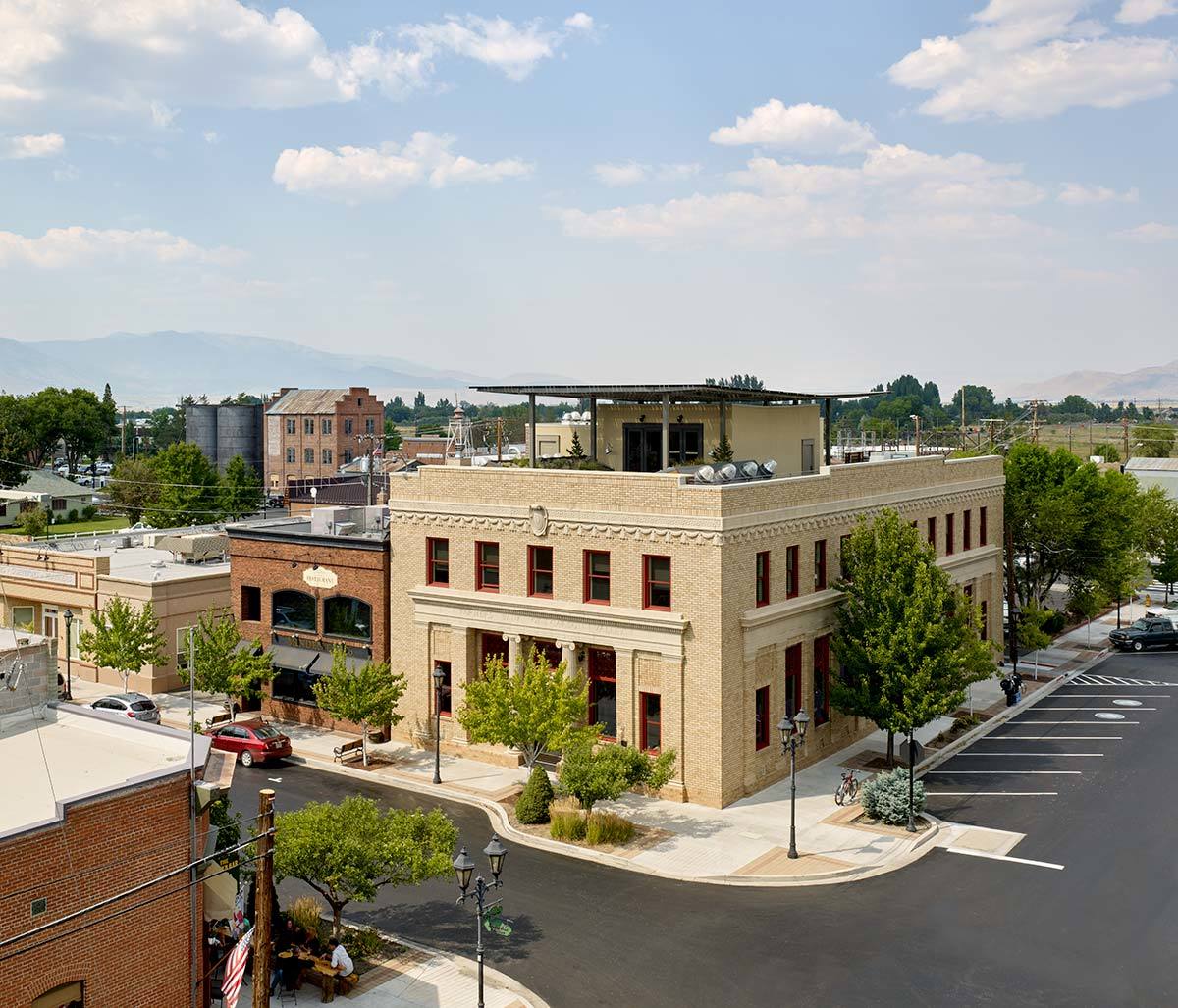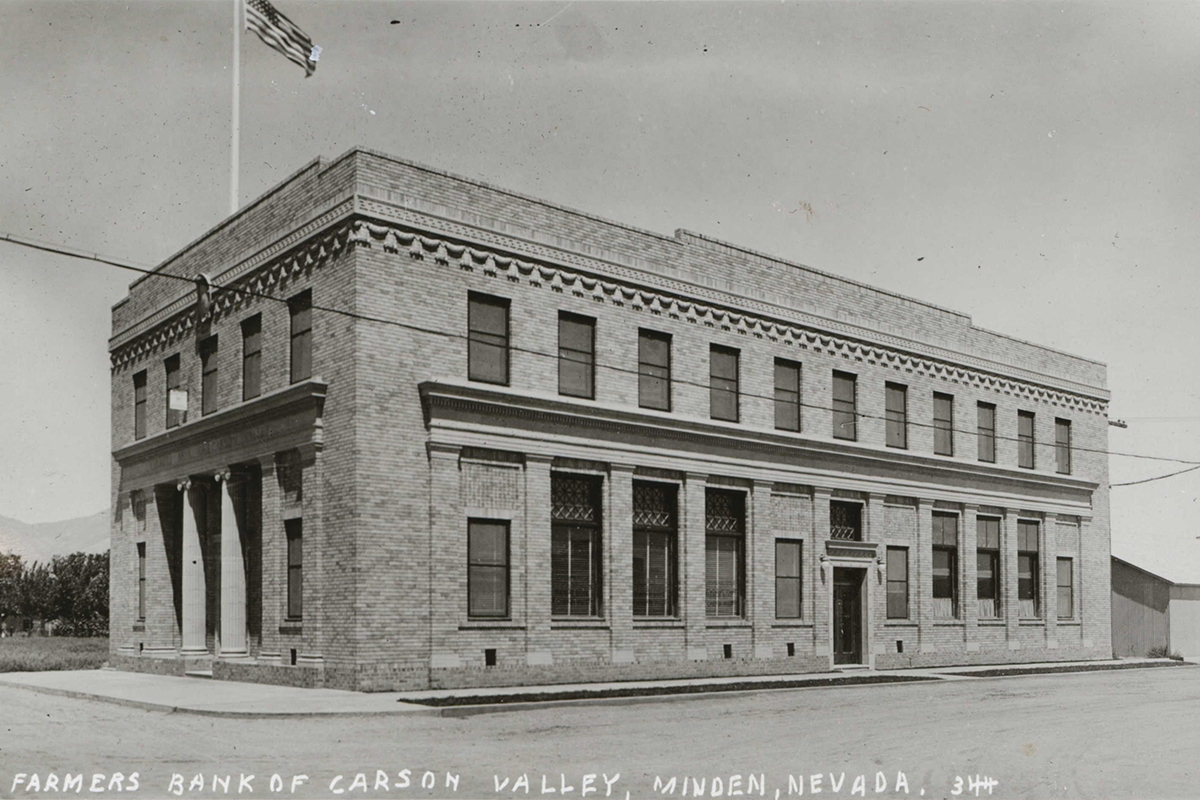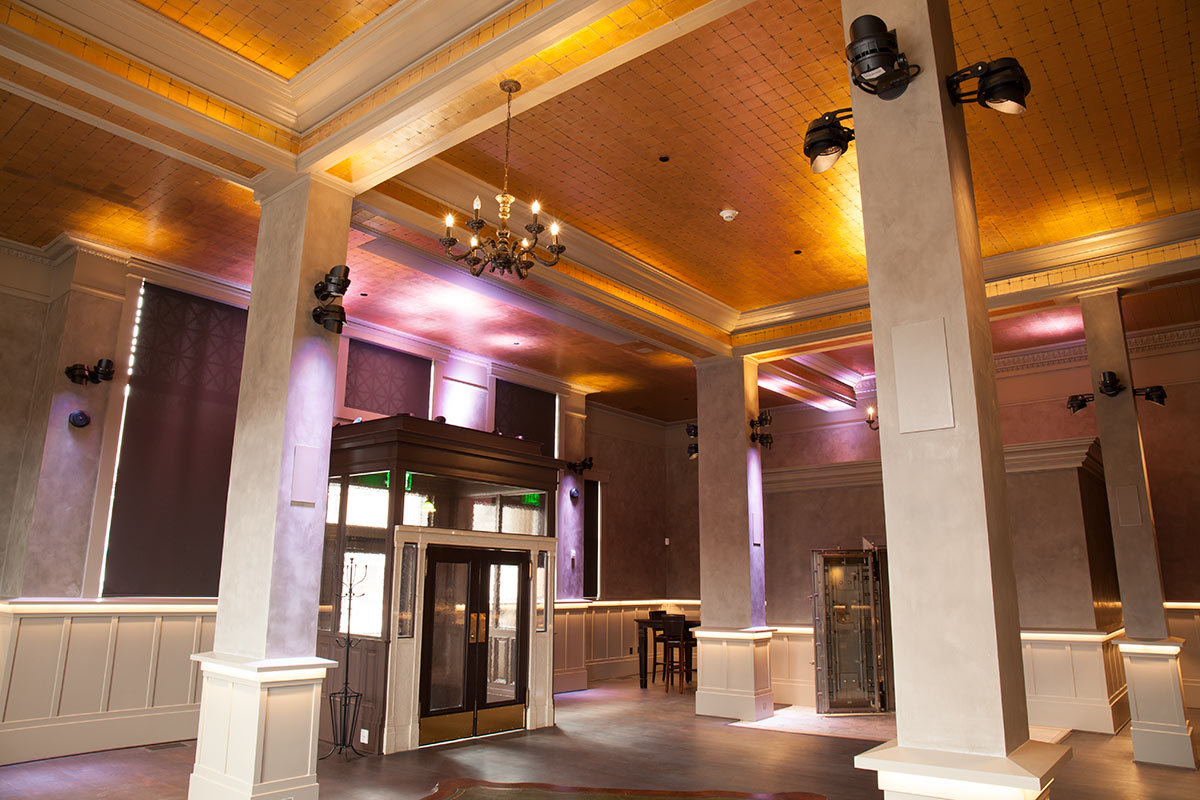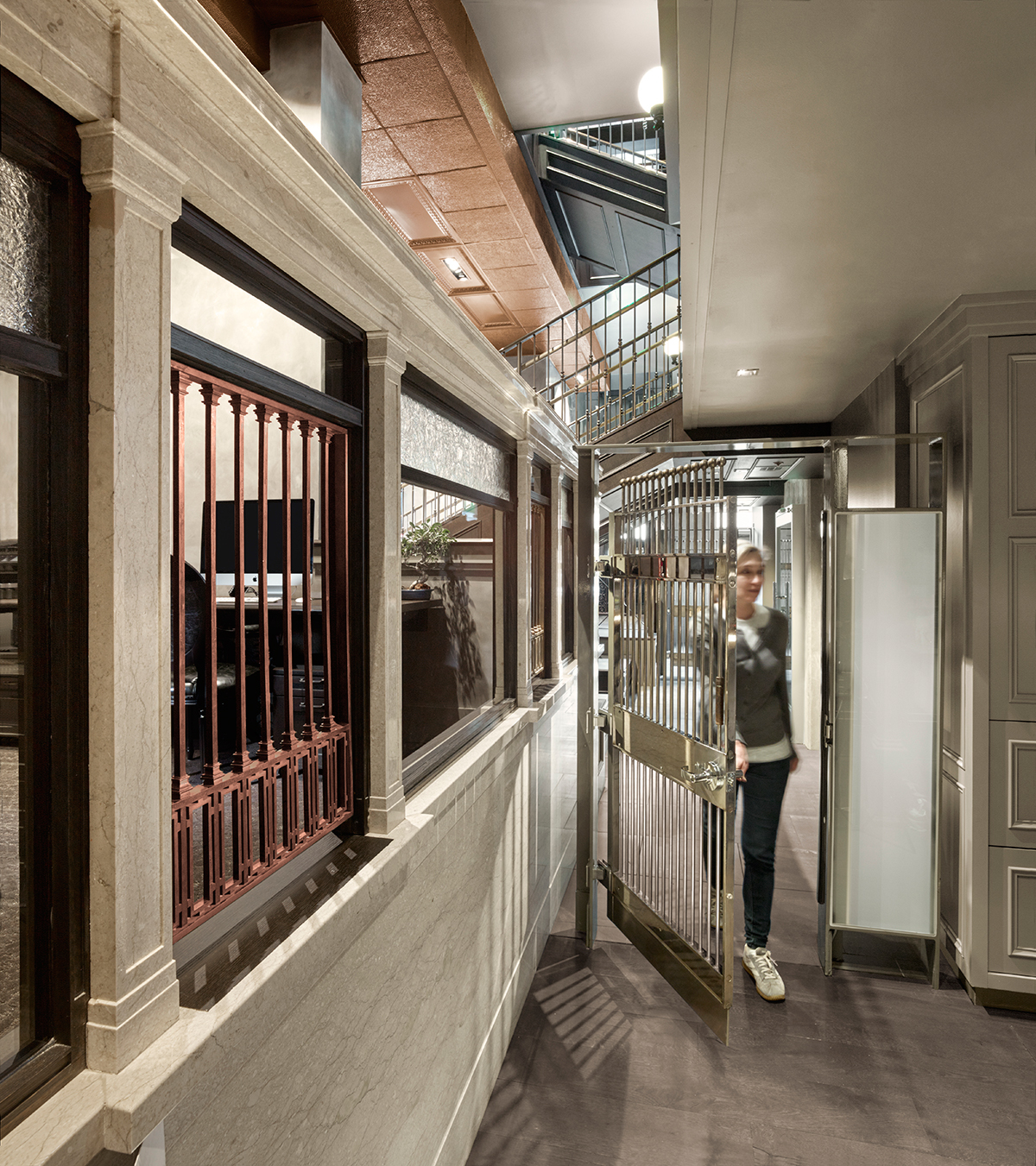Updates on the Farmers Bank, community news, green design awards, and more.
Updates on the Farmers Bank, community news, green design awards, and more.

© Cesar Rubio
Douglas County is undergoing a renaissance of historic building preservation, led by Christopher Bently of Bently Enterprises. Christopher was recently recognized for the preservation of the Farmers Bank building and for his focus on sustainable design, environmental awareness, and community-centric business practices.
I see no sense in building new structures when we have beautiful historic properties left abandoned. We need a sense of tradition and worth brought back to our culture. A disposable world just won’t do.

Read the full article about Christopher’s projects, as well as the The Pink House and the C.O.D. Casino, at the Record Courier.

© Cesar Rubio
Christopher Bently has been recognized by the Douglas County Historical Society for the preservation of Minden’s historic Farmers Bank building. This is an important milestone not only for Christopher but for his company Bently Enterprises, whose mission is focused on sustainable design, environmental awareness, and community-centric business practices.
Preserving a ninety-year old building while making it into a contemporary space is easy — that is, if you simply get rid of what made it worth saving in the first place. But Christopher Bently took the high road with Minden’s Farmers Bank, creating a 21st-century workplace that conserves history while capturing that ineffable sense of time and history so important to the Minden community. The Farmers Bank now serves as the corporate flagship of Bently Enterprises’s Nevada wing.

Building teams reused historic elements such as the original teller windows to differentiate between public and private areas on the first floor. The first floor’s gold leaf ceiling was also preserved, thanks to enormous planning and effort throughout the building’s structural refit. The oil lamp that hung in the entrance from 1918 until 1969 now lights the staircase to the second floor. The bank’s vaults were repurposed as private meeting rooms; their massive doors were reused to create a dramatic board room table in the main meeting area.
History also lives on in the small details, including the classical trim, railings, ionic columns, original chandeliers, map drawers, cabinetry, and the commercial transaction counter. These small features capture a bygone century’s elegance and craftsmanship, and together give the building an overall sense of history writ large.
As Christopher Bently says,
I see no sense in building new structures when we have beautiful historic properties left abandoned. We need a sense of tradition and worth brought back to our culture. A disposable world just won’t do.